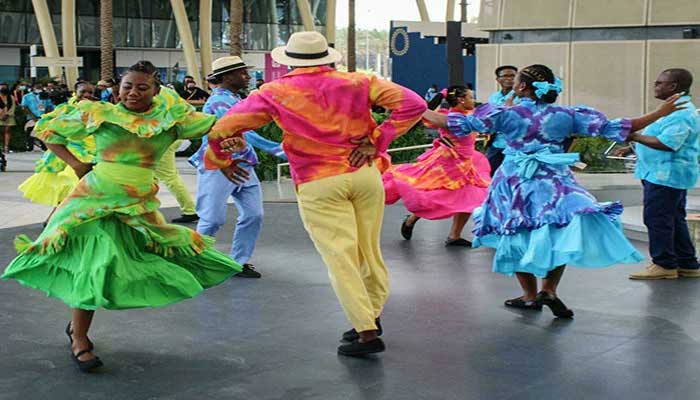Seychelles slave dance becomes Unesco heritage
Victoria, Seychelles: A dance form created by African slaves and brought to the Seychelles in the 18th century, "moutya" was added to Unesco´s list of intangible heritage on Wednesday, bringing global attention to the archipelago´s national emblem.
"This recognition... is an accomplishment," said David Andre, secretary general of the Seychelles Institute of Culture, Heritage and the Arts, shortly after Unesco, the United Nations body dedicated to the promotion of culture and education, announced the news on Twitter.
"It will allow us as a people to preserve our culture for the next generations who will continue to value it," he told AFP. The dance form known as "moutya" was introduced to the Seychelles by enslaved Africans who arrived there with French settlers. Originally performed around a bonfire, deep in the forest in the dead of night, moutya was an expression of resistance, allowing enslaved people to share their suffering and sing about the difficulties they faced, far from their masters´ ears.
Their instruments were basic -- goatskin drums, coconuts, metal triangles, cooking pots and utensils -- and the choreography simple and sensual. First, the drums -- the main instruments used -- are heated over a fire, before musicians begin to play them, prompting the male and female dancers to sway their hips and slap their feet against the ground.
-
 Charlie Puth Reveals Wake-up Moment That Made Him Quit Alcohol
Charlie Puth Reveals Wake-up Moment That Made Him Quit Alcohol -
 Meghan Trainor Welcomes Baby Girl Mikey Moon Trainor And Turns Emotional
Meghan Trainor Welcomes Baby Girl Mikey Moon Trainor And Turns Emotional -
 Why Keith Urban's Daughters Are Avoiding His Rumored Girlfriend? Source
Why Keith Urban's Daughters Are Avoiding His Rumored Girlfriend? Source -
 Sarah Ferguson Led Andrew To Jeffrey Epstein: ‘She Wanted Him To Ask For More Money’
Sarah Ferguson Led Andrew To Jeffrey Epstein: ‘She Wanted Him To Ask For More Money’ -
 Blake Lively Claimed Justin Baldoni 'made A Monster' Of Her, Court Docs Reveal
Blake Lively Claimed Justin Baldoni 'made A Monster' Of Her, Court Docs Reveal -
 Prince William Accused Of 'harsh Decisions' Over Disgraced Royal
Prince William Accused Of 'harsh Decisions' Over Disgraced Royal -
 Dolly Parton Gets Major Surprise On 80th Birthday
Dolly Parton Gets Major Surprise On 80th Birthday -
 Jennifer Lawrence Revisits Viral Kourtney Kardashian Comment: 'Insane'
Jennifer Lawrence Revisits Viral Kourtney Kardashian Comment: 'Insane' -
 Prince William, Kate Middleton Engage In Fierce Curling Match In Scotland
Prince William, Kate Middleton Engage In Fierce Curling Match In Scotland -
 Charlie Puth Admits He Was 'very Cringe' During Early Fame
Charlie Puth Admits He Was 'very Cringe' During Early Fame -
 Prince William’s ‘failed’ Mother Diana Sparks Another Row With Prince Harry: ‘It’s Crossing A Line’
Prince William’s ‘failed’ Mother Diana Sparks Another Row With Prince Harry: ‘It’s Crossing A Line’ -
 Jennifer Garner Reflects On Special Bond With Mark Ruffalo
Jennifer Garner Reflects On Special Bond With Mark Ruffalo -
 King Charles Stuck With Supporting Prince Harry 'great Cause'
King Charles Stuck With Supporting Prince Harry 'great Cause' -
 Nicola Peltz Is 'the Issue' In Beckham Drama, Ex Stylist Claims
Nicola Peltz Is 'the Issue' In Beckham Drama, Ex Stylist Claims -
 Expert Speaks Out On Andrew’s Vicious Circle With Jeffrey Epstein Of Information Trading & Honey Traps
Expert Speaks Out On Andrew’s Vicious Circle With Jeffrey Epstein Of Information Trading & Honey Traps -
 Prince William, Kate Middleton Honour Scottish Culture By Weaving Tartan
Prince William, Kate Middleton Honour Scottish Culture By Weaving Tartan




